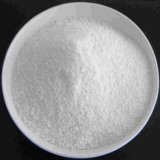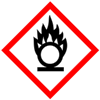Zinc Peroxide SDS MSDS of Manufacturers & Exporters
Please check Zinc Peroxide USP NF ACS BP Ph Eur EP JP IP Analytical reagent FCC Food grade Manufacturers our associates world class FDA-GMP approved, ISO-9001 Certified facility Anmol Chemicals

Zinc Peroxide CAS Number 1314-22-3
Zinc Peroxide SDS, Safety Data Sheet
MSDS, Material Safety Data Sheet 29-July-22
1. Product Identification
Product Name & Other Names: Zinc Peroxide or Zinc Superoxide.
CAS No.: 1314-22-3
Molecular Weight: 97.4
Chemical Formula: ZnO2
Relevant uses and uses advised against (if any): Industrial Manufacturing.
Suppliers: As per letterhead.
2. Hazards Identification
GHS, Globally Harmonized System Classification in accordance with 29 CFR 1910
Classification according to Regulation (EC) No 1272/2008
Oxidizing liquids; Oxidizing solids Category 1, H271
Skin corrosion/irritation Category 2, H315
Serious eye damage/eye irritation Category 2A, H319
Chronic aquatic toxicity Category 1, H410
Labeling according to GHS & Regulation (EC) No 1272/2008
GHS Label Elements

Oxidizing Solid |
GHS Label Elements

Irritant |
GHS Label Elements

Aquatic Toxicity |
Signal Word: Warning
Hazard Statements:
H271: May cause fire or explosion; strong oxidizer.
H315: Causes skin irritation.
H319: Causes serious eye irritation.
H410: Very toxic to aquatic life with long lasting effects.
Precautionary Statements
P210: Keep away from heat/sparks/open flames/hot surfaces. - No smoking.
P220: Keep/Store away from clothing/other combustible materials.
P221: Take any precaution to avoid mixing with combustibles.
P260: Do not breathe dust/fume/gas/mist/vapors/spray.
P264: Wash ... thoroughly after handling.
P273: Avoid release to the environment.
P280-Wear protective gloves/protective clothing/eye protection/face protection.
P283: Wear fire/flame resistant/retardant clothing.
P302+P352 - IF ON SKIN: Wash with plenty of soap and water.
P304 + P340 - IF INHALED: Remove victim to fresh air and keep at rest in a position comfortable for breathing.
P314: Get Medical advice/attention if you feel unwell.
P332+P313: If skin irritation occurs: Get medical advice/attention.
P337+313: If eye irritation persists get medical advice/attention.
P305+P351+P338: IF IN EYES: Rinse cautiously with water for several minutes. Remove contact lenses, if present and easy to do. Continue rinsing.
P306+360: IF ON CLOTHING: Rinse immediately contaminated clothing and skin with plenty of water before removing clothes.
P370+378: In case of fire: Use Dry chemical, carbon dioxide, Halon, water spray, or fog for extinction. If water is used, apply from as far a distance as possible.
P371+380+375: In case of major fire and large quantities: Evacuate area. Fight fire remotely due to the risk of explosion.
3. Composition/Information on Ingredients
Product Name & Other Names: Zinc Peroxide or Zinc Superoxide.
CAS No.: 1314-22-3
Molecular Weight: 97.4
Chemical Formula: ZnO2
4. First Aid Measures
Always seek medical attention after first aid measures are provided.
Inhalation: If is inhaled, remove to fresh air. If breathing is difficult, give oxygen. Get medical attention.
Ingestion: Do not induce vomiting unless directed to do so by medical personnel. Never give anything by mouth to an unconscious person. If large quantities of this material are swallowed, call a physician immediately. Loosen tight clothing.
Skin Contact: Immediately flush skin with plenty of water for at least 15 minutes while removing contaminated clothing and shoes. Get medical attention. Wash clothing before reuse. Thoroughly clean shoes before reuse.
Eye Contact: Check for and remove any contact lenses. In case of contact, immediately flush eyes with plenty of water for at least 15 minutes. Get medical attention.
5. Fire Fighting Measures
Fire: Substance is a strong oxidizer and its heat of reaction with reducing agents or combustibles may cause ignition.
Explosion: May explode when shocked, exposed to heat or flame, or by spontaneous chemical reaction. Sealed containers may rupture when heated. Sensitive to mechanical impact.
Fire Extinguishing Media: Dry chemical, carbon dioxide, Halon, water spray, or fog. Water spray may be used to keep fire exposed containers cool. Do not allow water runoff to enter sewers or waterways.
Extinguishing Media Not recommended: None specified.
Special Information: In the event of a fire, wear full protective clothing and NIOSH-approved self-contained breathing apparatus with full face piece operated in the pressure demand or other positive pressure mode. At high temperatures under fire conditions, it may produce toxic or irritating fumes. Fire-extinguishing work is done from the windward and the suitable fire-extinguishing method according to the surrounding situation is used.
6. Accidental Release Measures
Personal precautions, protective equipment, and emergency procedures: Avoid breathing dust/fumes/gas/mist/vapors/spray. Use individual protective equipment (waterproof boots, suitable protective clothing, safety glasses, etc.). Restrict unprotected personnel from the area. Do not approach facing the wind.
Environmental precautions: Do not let the product enter drains, soil, or water sources.
Methods and materials used for containment cleanup procedures and Storage: Oxidizing material. Stop leak if without risk. Avoid contact with a combustible material (wood, paper, oil, clothing...). Keep substance damp using water spray. Do not touch spilled material. Prevent entry into sewers, basements, or confined areas; dike if needed.
7. Handling and Storage
Precautions for safe handling: Apply according to good manufacturing and industrial hygiene practices. Ensure proper ventilation. Wash thoroughly after handling. Do not drink, eat, or smoke while handling. Avoid contact with skin, eyes, and clothing. Minimize dust generation. Avoid breathing dust/fumes/gas/mist/vapors/spray. Keep container tightly closed. Avoid ingestion and inhalation. Use individual protective equipment (waterproof boots, suitable protective clothing, safety glasses, etc.).
Conditions for safe storage, including any incompatibilities: Store in cool, dry, and ventilated area away from heat sources and protected from sunlight in tightly closed original container. Keep air contact to a minimum. Do not leave the material container open. Store protected from heat, sparks and ignition sources and incompatible materials. Avoid contact with skin and eyes. Avoid inhalation of dust/mist/vapor. Do not store with incompatible materials like organic compounds, carbonaceous materials, reducing agents, moisture, heat, light, combustibles or other readily oxidizable materials.
8. Exposure Controls/Personal Protection
Airborne Exposure Limits: TWA 2.0 mg/m3 USA, ACGIH Threshold Limit Values (TLV).
Ventilation System: A system of local and/or general exhaust is recommended to keep employee exposures as low as possible.
Personal Respirators (NIOSH Approved): For conditions of use where exposure to dust or mist is apparent and engineering controls are not feasible, a particulate respirator (NIOSH type N95 or better filters) may be worn.
Skin Protection: Wear impervious protective clothing, including boots, gloves, lab coat, apron, or coveralls, as appropriate, to prevent skin contact.
Eye Protection: Use chemical safety goggles and/or full-face shield where dusting or splashing of solutions is possible. Maintain eye wash fountain and quick-drench facilities in work area.
Other Control Measures: Maintain good housekeeping in work area. Handle in accordance with good industrial hygiene and safety practice. Wash hands after handling.
9. Physical and Chemical Properties
Appearance: Light yellow powder or granules.
Odor: Odorless.
Odor threshold: Not available.
pH: Not available.
Relative density: 1.57
Melting Point: 212C
Initial boiling point and boiling range: Not available.
Flash point: Not available.
Auto-ignition temperature: No information found.
Decomposition temperature: No information found.
Upper/lower flammability or explosive limits: No information found.
Vapor pressure: No information found.
Vapor density: No information found.
Evaporation rate: No information found.
Flammability (solid, gas): No information found.
Partition coefficient: n-octanol/water: No information found.
Solubility(ies): No information found.
Viscosity: No information found.
Molecular Weight: 97.4
Chemical Formula: ZnO2
10. Stability and Reactivity
Stability: Stable under ordinary conditions of use and storage.
Hazardous Decomposition Products: Oxides of zinc, fumes may form when heated to decomposition.
Hazardous Polymerization: Will not occur.
Incompatibilities: Organic compounds, carbonaceous materials, reducing agents, moisture, heat, light, and many other substances.
Conditions to Avoid: Heat, flames, ignition sources and incompatibles.
11. Toxicological Information
Oral rat LD50: No information found.
Carcinogenicity: This product is not classifiable as to its carcinogenicity based on its IARC, ACGIH, NTP, or EPA classification.
Mutagenic Effects: No information found.
Teratogenic Effects: No information found.
Developmental Toxicity: No information found.
12. Ecological Information
Toxicity: No information found.
Persistence and degradability: No information found.
Bioaccumulative potential: No information found.
Mobility in soil: No information found.
13. Disposal Considerations
Whatever cannot be saved for recovery or recycling should be handled as hazardous waste and sent to a RCRA approved waste facility.
14. Transport Information
Land Transport DOT USA, TDG Canada & ADR/RID Europe:
Proper Shipping Name: Zinc Peroxide
Hazard Class: 5.1, Packing Group: II
UN/NA: UN1516
Sea Transport IMDG/IMO:
Proper Shipping Name: Zinc Peroxide
Hazard Class: 5.1, Packing Group: II
UN/NA: UN1516
Air Transport ICAO/IATA:
Proper Shipping Name: Zinc Peroxide
Hazard Class: 5.1, Packing Group: II
UN/NA: UN1516
15. Regulatory Information
USA:
SARA 311/312: See section 2.
California Prop. 65 Components: Not listed.
Section 16 - Additional Information
DISCLAIMER: The information and recommendations set forth herein are presented in good faith and believed correct as of the date hereof. It is compiled from various sources, and it is not necessarily all inclusive nor fully adequate in every circumstance. In addition, these suggestions should not be confused with nor followed in violation of applicable laws, regulations, rules, or insurance requirements applicable. This SDS MSDS sheet is intended only as a guide to the appropriate precautionary handling of the material by a professionally trained person using this product. Individuals receiving the information must exercise their independent judgment in determining its appropriateness for a particular purpose. This shall not constitute a guarantee for any specific product features and shall not establish a legally valid contractual relationship. In no case shall our company be liable to loss or damages by the product user.
Specifications of Zinc Peroxide BP Ph Eur EP JP USP NF IP ACS Analytical Reagent FCC Food grade Manufacturers |








